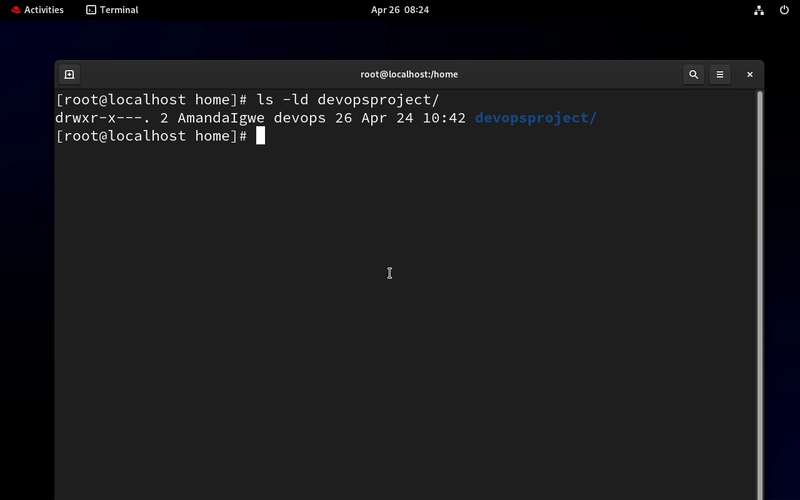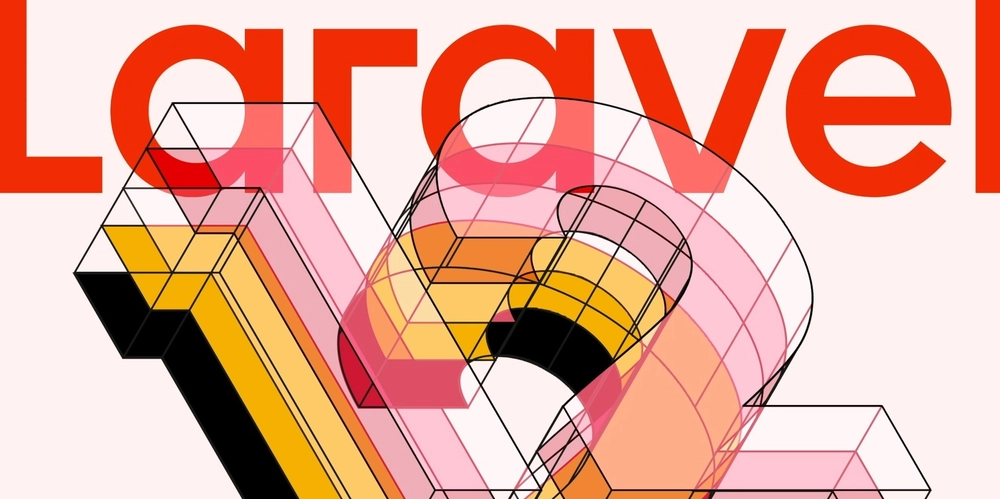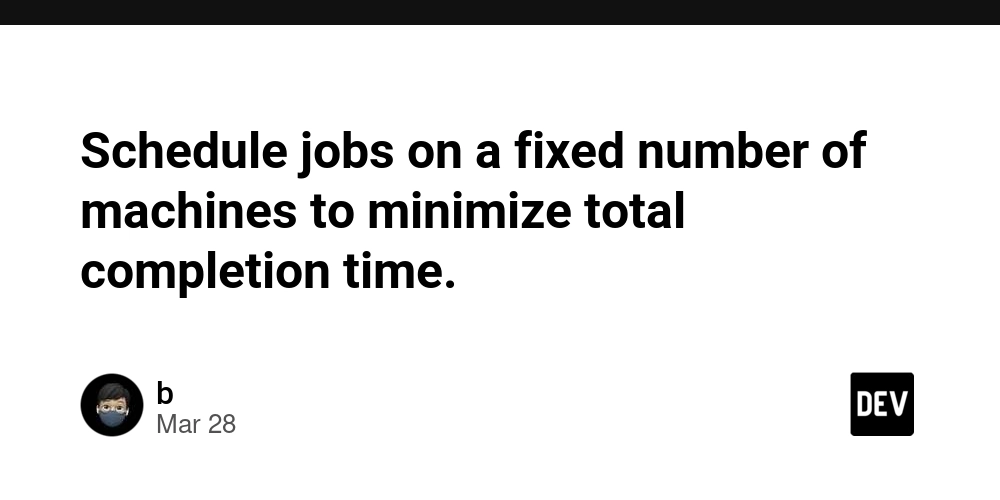Embracing the Future: Arbitrum’s Role in Institutional Blockchain Adoption
Abstract In this post, we explore how Arbitrum, an innovative Layer 2 scaling solution for Ethereum, is paving the way for institutional blockchain adoption. We detail Arbitrum’s background, core technical concepts, practical use cases such as DeFi, supply chain management, and asset tokenization, and examine the challenges and limitations that institutions may face during adoption. We also highlight future trends and innovations that could further cement Arbitrum’s role in building a more scalable and secure blockchain ecosystem. This post includes tables, bullet lists, and authoritative links to help developers and businesses understand how Arbitrum is transforming the blockchain landscape. Introduction Blockchain technology is evolving at an unprecedented pace. Institutions in finance, supply chain, and other sectors are increasingly exploring blockchain solutions to improve scalability, security, and cost efficiency. Arbitrum, created by Offchain Labs, has emerged as a key player in overcoming Ethereum’s limitations. By leveraging Optimistic Rollups, Arbitrum delivers a scalable Layer 2 solution that provides predictable transaction costs and operational security similar to Ethereum’s mainnet. This post unpacks Arbitrum’s role in facilitating institutional-level blockchain adoption. Background and Context History and Ecosystem Ethereum’s network congestion and high gas fees created bottlenecks that hindered its mass adoption—particularly by institutions that require scalable, cost-effective solutions. In response, the blockchain community rallied behind Layer 2 solutions. Arbitrum is one such solution that leverages Optimistic Rollups and Ethereum compatibility to allow institutions to transition their smart contracts seamlessly. Historically, after Ethereum’s inception in 2015, developers recognized that decentralized applications (dApps) and institutional applications needed greater throughput. Layer 2 solutions like Arbitrum address these challenges by moving many transactions off-chain while retaining the security of the main chain. For further reading on scalability challenges, see this comprehensive discussion on blockchain scalability solutions. Key Definitions Layer 2 (L2): Solutions that operate on top of a base blockchain to improve transaction speed and reduce costs. Optimistic Rollups: A scaling method that aggregately processes transactions off-chain under the assumption they are valid, disputing only in case of fraudulent activities. Smart Contracts: Self-executing contracts with the terms of the agreement directly written into code, which automate processes without intermediaries. Institutional Blockchain Adoption Institutions such as banks and supply chain companies are increasingly showing interest in blockchain. They require solutions that can handle large transaction volumes without compromising on security or efficiency. Arbitrum’s innovative approach meets these needs by ensuring seamless interoperability with Ethereum and regulatory compliance. Check out smart contracts on blockchain for more insights on their role in modern finance. Core Concepts and Features Arbitrum stands apart because of several core technical and operational features that make it attractive to institutional players. Below, we detail these key concepts: Scalability and Cost Efficiency Arbitrum addresses Ethereum’s cost and speed issues by bundling numerous transactions into one, lowering average gas fees and increasing throughput. This makes the platform especially attractive to institutions processing large volumes of transactions daily. Security and Ethereum Parity One of the standout features of Arbitrum is its close alignment with Ethereum’s security model. Institutions can confidently migrate their smart contracts to Arbitrum, knowing that the security guarantees remain robust. A parallel use case is explored in depth in the Deutsche Bank and JPMorgan Chase experiments to illustrate real-world trust in the solution. Interoperability Arbitrum’s design ensures seamless Ethereum compatibility. This interoperability allows institutions to integrate with Ethereum’s vast ecosystem without a steep learning curve or significant re-engineering of their existing applications. Compliance and Regulatory Considerations Given the evolving regulatory landscape, Arbitrum’s protocols are being designed to facilitate compliance. Its structure helps institutions meet necessary regulatory criteria, especially when handling sensitive data or financial transactions. Comparison Table: Ethereum vs. Arbitrum Feature Ethereum (Layer 1) Arbitrum (Layer 2) Transaction Speed Moderate; subject to congestion High throughput through rollup aggregation Gas Fees High and volatile Low and predictable Security Proven but congested Inherits Ethereum security model Interoperability Br

Abstract
In this post, we explore how Arbitrum, an innovative Layer 2 scaling solution for Ethereum, is paving the way for institutional blockchain adoption. We detail Arbitrum’s background, core technical concepts, practical use cases such as DeFi, supply chain management, and asset tokenization, and examine the challenges and limitations that institutions may face during adoption. We also highlight future trends and innovations that could further cement Arbitrum’s role in building a more scalable and secure blockchain ecosystem. This post includes tables, bullet lists, and authoritative links to help developers and businesses understand how Arbitrum is transforming the blockchain landscape.
Introduction
Blockchain technology is evolving at an unprecedented pace. Institutions in finance, supply chain, and other sectors are increasingly exploring blockchain solutions to improve scalability, security, and cost efficiency. Arbitrum, created by Offchain Labs, has emerged as a key player in overcoming Ethereum’s limitations. By leveraging Optimistic Rollups, Arbitrum delivers a scalable Layer 2 solution that provides predictable transaction costs and operational security similar to Ethereum’s mainnet. This post unpacks Arbitrum’s role in facilitating institutional-level blockchain adoption.
Background and Context
History and Ecosystem
Ethereum’s network congestion and high gas fees created bottlenecks that hindered its mass adoption—particularly by institutions that require scalable, cost-effective solutions. In response, the blockchain community rallied behind Layer 2 solutions. Arbitrum is one such solution that leverages Optimistic Rollups and Ethereum compatibility to allow institutions to transition their smart contracts seamlessly.
Historically, after Ethereum’s inception in 2015, developers recognized that decentralized applications (dApps) and institutional applications needed greater throughput. Layer 2 solutions like Arbitrum address these challenges by moving many transactions off-chain while retaining the security of the main chain. For further reading on scalability challenges, see this comprehensive discussion on blockchain scalability solutions.
Key Definitions
- Layer 2 (L2): Solutions that operate on top of a base blockchain to improve transaction speed and reduce costs.
- Optimistic Rollups: A scaling method that aggregately processes transactions off-chain under the assumption they are valid, disputing only in case of fraudulent activities.
- Smart Contracts: Self-executing contracts with the terms of the agreement directly written into code, which automate processes without intermediaries.
Institutional Blockchain Adoption
Institutions such as banks and supply chain companies are increasingly showing interest in blockchain. They require solutions that can handle large transaction volumes without compromising on security or efficiency. Arbitrum’s innovative approach meets these needs by ensuring seamless interoperability with Ethereum and regulatory compliance. Check out smart contracts on blockchain for more insights on their role in modern finance.
Core Concepts and Features
Arbitrum stands apart because of several core technical and operational features that make it attractive to institutional players. Below, we detail these key concepts:
Scalability and Cost Efficiency
Arbitrum addresses Ethereum’s cost and speed issues by bundling numerous transactions into one, lowering average gas fees and increasing throughput. This makes the platform especially attractive to institutions processing large volumes of transactions daily.
Security and Ethereum Parity
One of the standout features of Arbitrum is its close alignment with Ethereum’s security model. Institutions can confidently migrate their smart contracts to Arbitrum, knowing that the security guarantees remain robust. A parallel use case is explored in depth in the Deutsche Bank and JPMorgan Chase experiments to illustrate real-world trust in the solution.
Interoperability
Arbitrum’s design ensures seamless Ethereum compatibility. This interoperability allows institutions to integrate with Ethereum’s vast ecosystem without a steep learning curve or significant re-engineering of their existing applications.
Compliance and Regulatory Considerations
Given the evolving regulatory landscape, Arbitrum’s protocols are being designed to facilitate compliance. Its structure helps institutions meet necessary regulatory criteria, especially when handling sensitive data or financial transactions.
Comparison Table: Ethereum vs. Arbitrum
| Feature | Ethereum (Layer 1) | Arbitrum (Layer 2) |
|---|---|---|
| Transaction Speed | Moderate; subject to congestion | High throughput through rollup aggregation |
| Gas Fees | High and volatile | Low and predictable |
| Security | Proven but congested | Inherits Ethereum security model |
| Interoperability | Broad ecosystem | Fully compatible with Ethereum smart contracts |
| Scalability | Limited by on-chain processing | Enhanced scalability with off-chain aggregation |
This table clearly outlines the benefits that make Arbitrum a compelling option for institutions looking to overcome Ethereum’s inherent limitations.
Applications and Use Cases
Institutional adoption of blockchain is not a one-size-fits-all scenario—different sectors have unique needs. Here, we explore several practical use cases supported by Arbitrum:
Decentralized Finance (DeFi)
The rise of DeFi platforms corresponds with the need for scalable solutions. With Arbitrum, institutions can deploy low-cost, high-throughput DeFi applications. These applications include:
- Yield farming and liquidity pools: Enabling efficient asset management.
- Stablecoins and tokenized assets: Ensuring reliable and quick transactions.
For a deeper dive into DeFi applications on Arbitrum, explore decentralized finance for project funding.
Supply Chain Management
Arbitrum can significantly optimize supply chain operations by facilitating:
- Enhanced transparency: Blockchain’s immutable ledger helps in tracking the movement of goods.
- Reduced operational expenses: Streamlined processing reduces costs associated with verification and record-keeping.
Learn more about how blockchain is transforming industries in blockchain in supply chain.
Asset Tokenization
Tokenization of real-world assets such as real estate, art, or commodities can unlock liquidity and democratize investment. Arbitrum’s features support secure, cost-effective tokenization processes. More details can be found in the discussion on what is tokenization of assets.
Cross-border Payments
For institutions managing large volumes of cross-border transactions, Arbitrum facilitates faster and more economical payment settlements. This eliminates delays and reduces costs inherent in legacy banking systems.
Real-world Institutional Pilots
Some enterprises and financial institutions have already begun experimenting with Arbitrum:
- Financial giants: Prominent banks like Deutsche Bank and JPMorgan Chase are exploring tokenization and DeFi solutions on Arbitrum.
- Government collaborations: Pilot projects in identity verification highlight the platform’s versatility.
- Blockchain community: Projects and experiments discussed on platforms like Arbitrum and Community Governance further illustrate the widespread potential of this technology.
Bullet List: Key Drivers for Institutional Use
- Scalability and cost reduction: Enabling faster transaction times and reduced fees.
- Security parity with Ethereum: Institutions maintain confidence in secure operations.
- Interoperability: Easy integration with existing Ethereum-based systems.
- Regulatory compliance: Enhanced features for meeting compliance requirements.
- Cross-border and DeFi applications: Expanding the possibilities for global and decentralized finance.
Challenges and Limitations
While Arbitrum offers significant improvements over Ethereum’s limitations, institutions must be aware of several challenges:
Technical and Operational Barriers
- Educational Gaps: Institutions transitioning to Arbitrum require comprehensive training on Layer 2 solutions and Optimistic Rollups.
- Integration Complexity: While interoperability is a strength, integrating legacy systems with new blockchain layers may require complex technical overhauls.
Regulatory and Compliance Hurdles
- Dynamic Regulations: Global regulatory frameworks for blockchain are in constant flux. Institutions need to stay informed and adapt accordingly.
- Audit and Security Concerns: Despite high security, continuous auditing and monitoring are necessary to guard against potential exploits.
Market Adoption and Ecosystem Maturity
- Fragmented Ecosystem: As blockchain technology evolves, a competitive environment might lead to fragmentation. Institutions must evaluate the longevity and support ecosystem surrounding Arbitrum.
- Scalability Challenges: Although Arbitrum significantly enhances throughput, future growth will test the boundaries of current scaling solutions.
Risk and Fraud Management
Financial institutions must also consider the risk management and fraud detection measures on Arbitrum. Protocol upgrades and ongoing security assessments are vital to ensuring trust in the overall ecosystem.
For a detailed discussion on risk management strategies in blockchain technology as applied to Arbitrum, refer to resources such as Ensuring Security on Arbitrum: Strategies for Fraud Detection and Mitigation.
Future Outlook and Innovations
Arbitrum is continuously evolving. As institutions grow more comfortable with its benefits, we can expect several trends and innovations in the near future:
Protocol Upgrades and Layer 3 Developments
Future upgrades to Arbitrum may involve enhancements such as:
- Optimized transaction finality: Further reducing transaction confirmation times.
- Integration with Layer 3 solutions: Expanding the blockchain ecosystem’s capabilities.
- Enhanced developer tooling: Improving the overall developer experience and ecosystem support.
Institutional Integration and Regulatory Alignment
As institutions become more familiar with Arbitrum:
- Collaboration with regulators: In-depth engagement with regulatory bodies can lead to standardized compliance frameworks.
- Increased enterprise adoption: More banks and multinational corporations could integrate blockchain into their core systems.
- Case Studies: Detailed analyses of pilot programs, such as those being explored by Deutsche Bank, will set benchmarks for future adoption.
Innovations in Decentralized Applications (dApps) and NFT Marketplaces
Arbitrum is also making an impact in the realm of NFTs and dApps:
- NFT platforms: Lower transaction fees and faster confirmation can foster growth in NFT marketplaces.
- Gaming and Identity Verification: Emerging use cases include blockchain-based gaming and digital identity verification, as discussed on reputable industry sources.
Dev.to Insights and Community Growth
The growing community has actively discussed Arbitrum’s role in shaping blockchain future. For instance, Arbitrum and Community Governance: Pioneering Decentralized Decision Making provides insight into how institutional governance models could be revolutionized by blockchain. Additionally, insights on NFT adoption on Arbitrum have emerged in posts like Exploring NFTs on Arbitrum: A New Paradigm in Digital Ownership.
Research and Industry Collaborations
Innovations in blockchain are not developed in isolation. Collaborative projects between technology companies, governmental agencies, and financial institutions are already underway. The ongoing research and trials signify a promising future for Arbitrum and the broader adoption of blockchain technology.
Summary
Arbitrum’s introduction has marked a significant milestone in the journey toward scalable and cost-effective blockchain solutions. By addressing Ethereum’s limitations through Optimistic Rollups and maintaining stringent security protocols, Arbitrum enables institutions to transition smoothly into blockchain-powered business models. With robust features such as enhanced interoperability, reduced transaction fees, and improved compliance measures, industries like DeFi, supply chain management, asset tokenization, and cross-border payments can harness the power of blockchain.
However, challenges remain—from technical integration and regulatory uncertainties to the need for robust fraud management and continuous ecosystem growth. As research, pilot programs, and innovative upgrades progress, Arbitrum’s role in mainstream blockchain adoption is poised to expand significantly.
Institutions and developers alike are encouraged to explore this evolving landscape. Further reading on related topics such as Layer 2 scaling solutions and the future of open source with blockchain integration can provide additional insights. Moreover, resources like smart contracts on blockchain offer foundational knowledge that supports this transition.
Final Thoughts
The technological shift driven by Arbitrum is more than just a trend—it represents an evolutionary leap for blockchain technology in institutional settings. With the right balance of innovation, risk management, and regulatory alignment, Arbitrum is set to redefine how large-scale enterprises interact with decentralized networks. By bridging the gap between legacy systems and modern blockchain solutions, Arbitrum ensures that institutions can embrace a future where blockchain technology underpins secure, efficient, and transparent digital operations.
Key Takeaways
- Arbitrum utilizes optimistic rollups to overcome Ethereum’s scalability issues, making it an ideal candidate for institutional adoption.
- The solution offers improved scalability, reduced gas fees, and retains Ethereum’s robust security, attracting a diverse range of applications from DeFi to supply chain operations.
- Despite its benefits, institutions must navigate technical, regulatory, and security challenges during adoption.
- Future upgrades and research collaborations will continue to enhance Arbitrum’s capabilities and further integrate blockchain into mainstream economic systems.
As the industry evolves, staying informed through continuous study and practical experimentation will be key. Whether you are a developer looking to build cutting-edge dApps or a corporate leader exploring decentralized finance, Arbitrum’s advanced technology offers a promising pathway to sustainable innovation.
For additional insights and community discussions, consider checking out related posts on Dev.to such as Arbitrum and Community Governance: Pioneering Decentralized Decision Making and Exploring NFTs on Arbitrum: A New Paradigm in Digital Ownership.
By embracing the future of sustainable blockchain innovation through Arbitrum, institutions are not just adapting to change—they are actively shaping the next generation of digital infrastructure.
This detailed exploration of Arbitrum underscores its transformative potential across various industries. Whether you’re interested in the technical details or strategic implementation, Arbitrum paves the way for a more scalable, compliant, and efficient blockchain-powered future.










































































































































































![[The AI Show Episode 144]: ChatGPT’s New Memory, Shopify CEO’s Leaked “AI First” Memo, Google Cloud Next Releases, o3 and o4-mini Coming Soon & Llama 4’s Rocky Launch](https://www.marketingaiinstitute.com/hubfs/ep%20144%20cover.png)



















































































































































































.jpg?width=1920&height=1920&fit=bounds&quality=70&format=jpg&auto=webp#)






















































































_Olekcii_Mach_Alamy.jpg?width=1280&auto=webp&quality=80&disable=upscale#)
















































































































![Apple Drops New Immersive Adventure Episode for Vision Pro: 'Hill Climb' [Video]](https://www.iclarified.com/images/news/97133/97133/97133-640.jpg)

![Most iPhones Sold in the U.S. Will Be Made in India by 2026 [Report]](https://www.iclarified.com/images/news/97130/97130/97130-640.jpg)
![Apple to Shift Robotics Unit From AI Division to Hardware Engineering [Report]](https://www.iclarified.com/images/news/97128/97128/97128-640.jpg)
































































































































